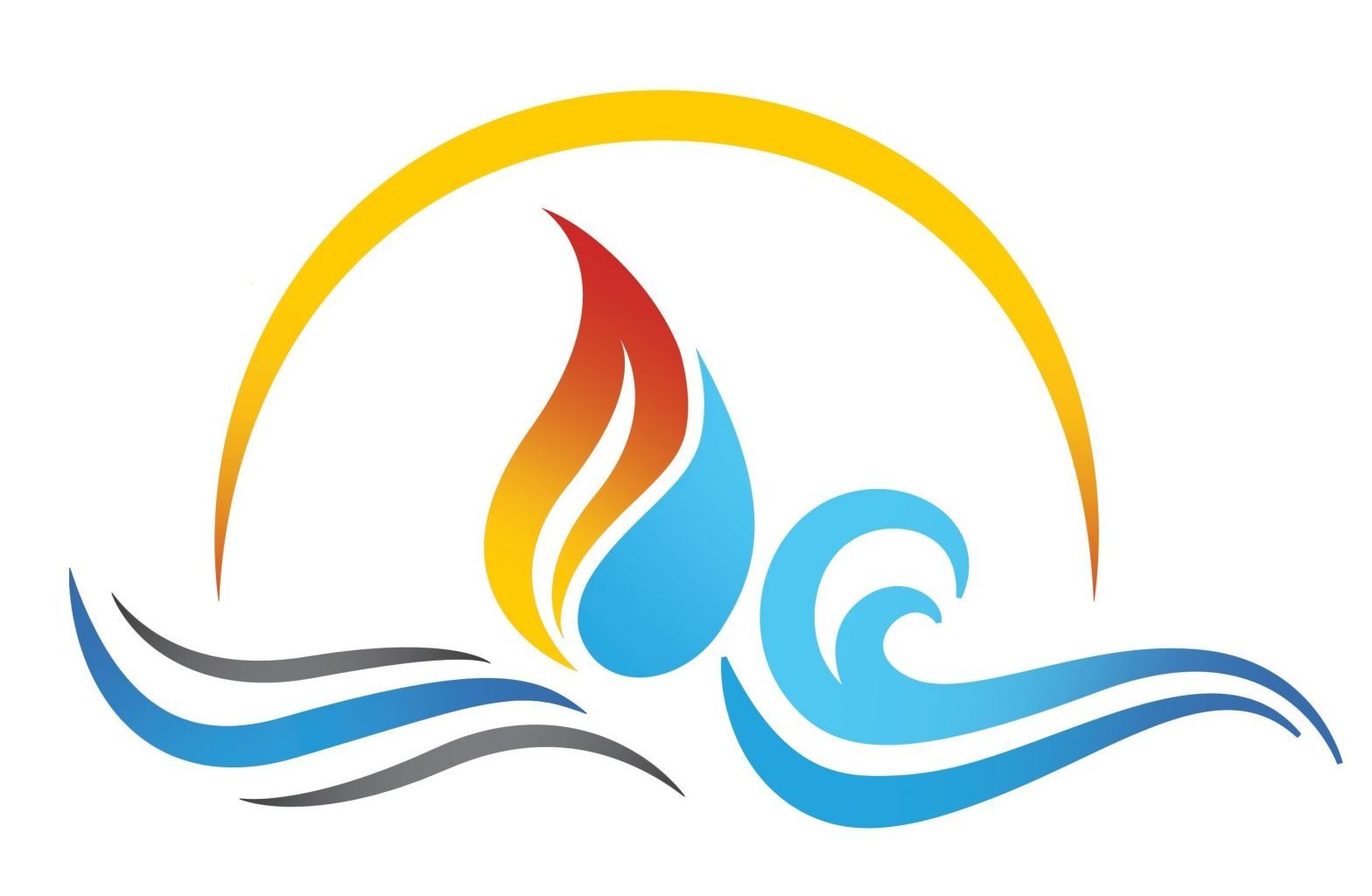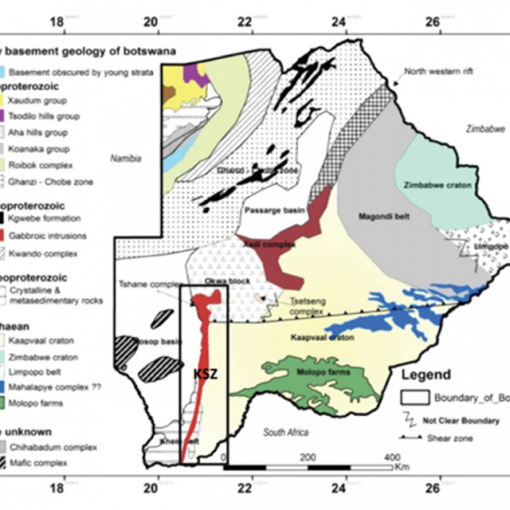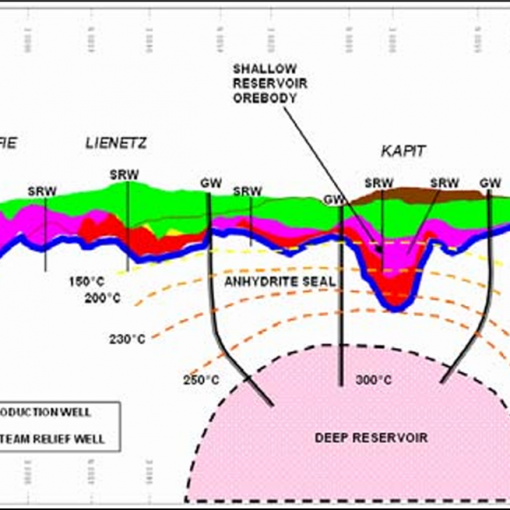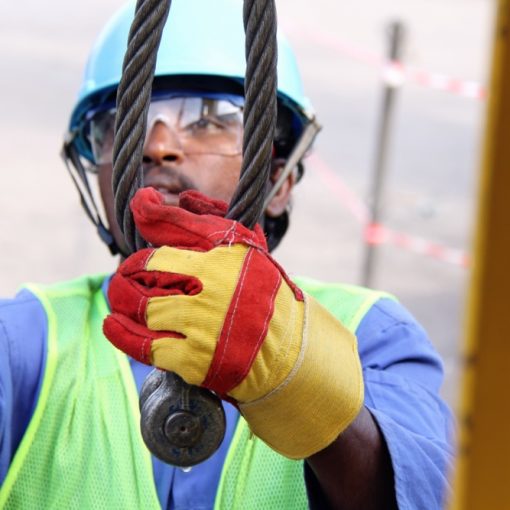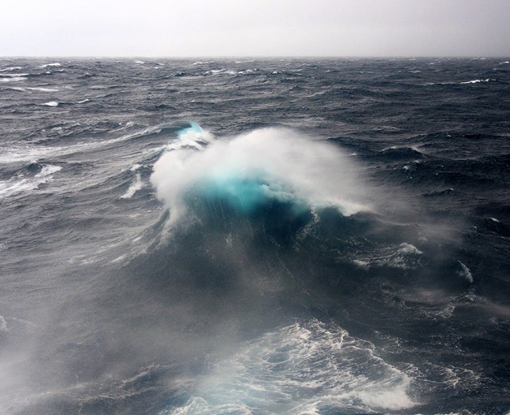Beginning with the end in mind
There are estimated to be over 8,200 wells in the North Sea, and of these, around 5,000 wells require abandonment in the next 10 – 15 years[1], at an estimated cost of over £30bn.
In one of his ‘7 Habits of Highly Effective People’, Stephen Covey talks about ultimate outcomes, results, values and the destination of our endeavours, products and services.

In 2020, we are used to ideas being developed iteratively, and developing the answers from experience-led design. We use Agile methods, iterative development, Minimum Viable Products and Design Thinking to accelerate the journey, without quite knowing where we are going.
We can describe a “Hill” and result that we want to see, but that is a stepping-stone.
In 1964, when the UK Continental Shelf Act was passed, and the oil platforms of the UK North Sea began to be designed, built and commissioned, their only purpose was their production capacity. That is, their enduring capability of ultimate recovery of the hydrocarbons in the field, or fields, of the basin.
Then in 1988, the Piper Alpha disaster, with 167 fatalities, placed Safety and Operational Integrity at the centre of the industry.
The platforms were designed for perhaps 30 or 40 years. Some have been operating now for over 50 plus years. And certainly, there were no considerations back then for an environmentally circular way to decommission these rigs. Decommissioning originally meant stop production, safely abandon the wells, and transport the steel and concrete onshore or even sink parts of them. This is no longer acceptable.
Increasingly now is the time to think about beginning with the end in mind. The Decommissioning sector offers significant socio-economic opportunity in Circular Economy job creation and engineering innovationin UK and European supply chains. This should also be a foundation from which UK based firms export expertise to other parts of the world.

Jobs in the oil and gas in industry are at risk, investment funds are explicitly avoiding hydrocarbon-based businesses, and all the supermajors are moving through the Energy Transition (electrification, cleaner fuels and a steady growth in renewables). There isn’t a single automotive manufacturer that isn’t developing electric, connected and autonomous cars. Even “hybrid” is just a transitionary phase, until we move to shared electrical vehicles, like the trams you see in The Netherlands, only without the electric line infrastructure.
After all, Net Zero by 2050 is the law. Upstream companies will participate in the Energy Transition, but we need to ensure that legacy issues and costs do not hinder this movement into the future.
There is a way to create a new jobs revival, with new Centres of Excellence in places like Scotland, Stavanger and the Netherlands, using the 60+ years of engineering knowledge and world class technical know-how. By fusing digital platforms like Digital Twins and A.I. with updated engineering documentation, this would allow a Circular Economy approach to decommissioning these fields.
In fact, by digitising through 3-D surveys, intelligent sensor tagging and ingestion of data into A.I. platforms, we can create ‘Digital Twins for the end of life’ and for the ‘rebirth’ of these assets. Even if portions of the equipment are headed for commoditised steel recycling, we can still develop a digital footprint and traceability trail.
Over the life of an oil platform, its service history will have passed through several oil field services providers. It could have been commissioning by one Operator with their Engineering, Procurement and Construction (EPC) contractor. Then it may have been serviced and maintained by another contractor. Then maybe sold to another Operator, and then extended and modified by another. The data footprint over its life, is scattered across many entities, so no-one has the monopoly on (or source of all) wisdom. And this information over the lifecycle, is a mixture of proprietary and public domain data.
When a rig or field is to be decommissioned, there may be 7 or 8 options on how to do it. But if all the historical data and true current conditions, all the economic and option analysis is known, then those options could be reduced to 2 or 3. It would be a faster and cheaper exercise.
Digital Twin Exchanges, and similar platforms that collect data and documents, can help build a Digital Twin of a facility – but this time, at the end of its life, not just at the beginning (when it is normally expected to develop a ‘greenfield’ Digital Twin). The engineering team with its many years’ capability, can then curate this data. Turning engineers into data scientists to improve the predictive capabilities of the A.I. models.

This development could achieve a number of aims:
- Collect and verify asset lifecycle information, from various sources, both open source (such as HSSE audits and inspections), and proprietary (such as Asset Integrity services, that various providers have delivered over decades);
- Create a body of knowledge – a ‘corpus’ – and curate and improve the confidence in that data and document information to create an available source of truth, from the originating and sustaining entities that were responsible for the asset – either as Duty Holders, License to Operate holders, turnkey service providers and other oil field service providers. If not a ‘single source of truth’, then this can at least be a ‘trusted’ one;
- Re-energise the oil and gas experience in the North Sea, and other hydrocarbons basins of the world, and create a new era of jobs for the experienced professionals needed across all the relevant domains – engineering, commercials, materials management, supply chain, integrity management, inspections, maintenance and commercial;
- Attract emerging talent from newer generations who are interested in sustainability and Circular Economy concepts, much more than they are in extractive and, thus far, polluting technologies;
- Create new industries in and around the fields. It is not too fanciful to imagine a number of them, such as a marine based evolution of the areas, where new ecosystems can be developed and studied – the so called “Rig to Reef” or “Fish Farm” ideas. Marine life that thrive in warmer waters – squid, sardines, anchovies – are now flourishing in North Sea. Squid have been caught at 60% of survey stations, compared with 20% in the 1980s[2]. A Norwegian company is considering using a drilling rig for offshore salmon farming (with retractable salmon cages) as shown below[3]. Fish Cages have also been studied by Shell for installation on the side of offshore platform jackets and then trialed by being moored adjacent to an operating platform [4].



An independent, vendor neutral and collaborative platform could be developed (using such available and proven technologies, as Microsoft’s Azure or IBM’s Watson or Amazon Web Services, and others), to hold such information and allow interested bidders, service companies, other operators to access the history and improve the overall data quality level, and the information basis from which decommissioning projects can be scoped, economically justified and delivered.
The organic physical roadmap can be shown in this graphic, splitting biological and technical materials, that play a role in the restoration, planning for safe enclosure and boundary conditions:

We can then look at a Cradle-to-Cradle journey, parallel running the physical with the digital, starting from pre-digital data, like microfiche and paper, to allow a traceability footprint and give better options on destination, dismantling, recycling or disposal uses. The value savings shown on the green bullets below will repay any investment in using digital technology. Creating a ‘Digital Twin’ platform for End-of-Life:

Getting Your Facility Ready for the Circular Economy
The topsides of an offshore production platform (or an onshore process plant) contains thousands of different items including valves, instruments, cables, piping, pressure vessels, and equipment. The Operator of this facility would have needed to have kept these items safely operating right up to the time of cessation of production based on safety reasons and regulatory scrutiny by the applicable agencies and verification/certification authorities. This means that the technical safety of the facility would have needed to have been under scrutiny with regular inspection and maintenance management. Usually the fabric maintenance is under stress at the end of life since this is less safety critical, so protective coating would have begun to degrade with some signs of external corrosion.
In the UK, the Offshore Safety Directive Regulator (OSDR), a collaboration between OPRED (the UK Offshore Petroleum Regulator for Environment and Decommissioning) and the HSE, produces yearly intervention plans detailing planned inspections to be undertaken of oil and gas installations. These inspections are a combination of “operators and owners’ onshore offices and of offshore oil and gas installations, to ensure compliance with relevant Regulations and permit conditions. It is also to gain assurances that operations are undertaken with due consideration of environmental aspects and impacts and with effective controls to minimise the likelihood of releases to the environment.”[5] Following on from these inspections, enforcement activity may involve improvements being required. Sometimes operations are prohibited from operating until these improvements are made. There is a public register of enforcement, improvement and prohibition notices, and convictions. So, Operators are well incentivised to keep their facilities safe for personnel and the environment.
The safe condition of the facility means that there would be potential value in these items if properly planned and executed for decommissioning. OPRED has indicated that more discussions were needed with industry about reusing and repurposing oil and gas infrastructure.[6] Norwegian regulators have generally similar regulations and procedures.
Each UK facility would have a Safety Case with substantial documentation having been provided to the regulator[7]. Norway does not use the term Safety Case, but the documents required to be presented to the regulators are generally similar in accordance with the Norwegian Information Duty Regulations (NIDR). These submissions would include a lot of publicly available data that might fill some data gaps within the current Operators. There is a helpful UK Joint Industry Project to develop safety case guidance and technology solutions for End of Life (EoL) and Decommissioning[8]:

An important part of this Decommissioning safety case strategy is the use of manageable project phases to ensure all participants are prepared to do this work safely and economically. The strategy specifically discusses dismantlement and recycling as important steps. Digital Transformation can support the Engineering and Recycling phases. Pre-existing Maintenance Management Systems are specifically discussed with respect to the need to keep them live and active to make use of the data.
- Stage 1 Well P&A (Pre-Cessation of Production (CoP))
- Stage 2 Well P&A (Post CoP)
- Stage 3 Engineering down of existing systems to a defined condition / level of cleanliness
- Stage 4 Installation/ modification of new equipment and utilities
- Stage 5 Removals preparation (module separation / strengthening etc.)
- Stage 6 NUI / lighthouse phase
- Stage 7 Offshore topsides / jacket / pipeline removals activities (including sea fastening / rail / road compliance)
- Stage 8 Onshore dismantling, resale, recycle and disposal
- Stage 9 Duty of care / monitoring / assessment phase and ongoing liabilities (as applicable)
One of the first priorities is to know the physical details and integrity status of all items within the facility. This information should be available in a number of locations but, for End of Life facilities, a lot of the information may be unstructured (e.g. paper copies) and scattered through archived files of multiple participants:
- Engineering Design Documentation (including drawings, calculations, specifications, and reports);
- Engineering Analytical Documentation (including process simulation models);
- Procurement Documentation (including any changes to the original designs, Vendor documents, manufacturing, and testing records);
- Construction Documentation (including any changes to the original designs, As-Built details, testing (including pre-commissioning and commissioning), and handover to Start-Up / Operations;
- Operations Documentation (including operating data of production fluids, rates, pressures, temperatures, and resultant instrument/equipment readings across the facility for specific conditions, and how this data may be been seen to change over time (possibly due to performance and condition of items), and Enterprise Asset Management systems data);
- Maintenance Documentation (including Inspection records, details of spares and tools, details of work performed that may have modified the original design (maybe captured in As-Builts but maybe also not specifically recorded in master documents), Asset Integrity Management systems data, and Computerised Maintenance Management System data).
The fact that an offshore platform (or an onshore process plant) is going to one day come to the end of its life and need to be decommissioned and dismantled should not be a surprise to anybody. The timing may be a little uncertain, but access to this data will eventually be needed, and starting early to organise, better structure, and prepare for access would be a valuable operation to save significant costs, surprises, and lost value later. Most Operators have core corporate and Operations & Maintenance staff that should begin collecting this data some years before planned Cessation of Production (CoP). During any transactional changes of ownership or operatorship, data should have been provided and handed over to the subsequent Duty Holder. This needs to be confirmed and the location of all documentation identified and accessed. This effort pays for itself. It is valuable in terms of both the economic benefit to the decommissioning Duty Holder, and also in the value that the seller can earn in a divestment transaction. Plus, jointly in the efficient time and lower cost required to decommission the facility. (Think “Win-Win” is another of Covey’s ‘7 Habits’). There are also ‘Externality Benefits’ to the environment and wider stakeholders, as well as benefits to succession businesses in the circular design chain, in having that traceability chain of materials and items.

Woodside Energy and IBM have successfully carried out just such an exercise to extract information from 30 years of “dense and complex engineering data”[9] Peter Coleman-Woodside CEO stated at the time that Woodside was “extremely data rich, but that data wasn’t going anywhere.” Woodside and IBM Watson for Projects uploaded 33,000 technical documents (including engineering, construction, test, and asset data including correspondence – mostly all unstructured) and advanced text analysis and machine-learning algorithms within IBM Watson Assistant software scanned all the content to create a web of relationships among data elements. “Training” of the Watson system was then done by technical personnel to facilitate data access queries using cognitive technology. Historical data is now able to be quickly accessed by multiple users including asset teams working on End of Life facilities to prepare for decommissioning.
Access to historical data is a common industry challenge and with the recent energy market disruptions, there are significant ongoing organizational changes and loss of technical resources. Personal knowledge and experience is being lost, so having data captured, organised, and made more easily accessible for the Circular Economy will save costs, mitigate potential risks, and provide increased access to value in the potentially recycled materials and items to help save cost in the decommissioning.
End of Life, brownfield facilities could have Digital Twins prepared to facilitate data analytics to help identify the degree (or lack of) degradation in facility infrastructure performance and any details of corrosion or integrity reduction in individual items. Digital Twins allow dynamic process simulations to compare physics-based models with actual field data to help with these integrity evaluations.
Integrity knowledge would help identify the residual value of these items for potential recycling. Preparing itemised lists of items with their condition and combining this data with the underlying technical details enables packages to be prepared for use in marketing (and maybe influence how something was dismantled before accidental damage to a valuable item). The value of an item is often a function of (1) knowledge of condition, (2) availability of documentation, and (3) details of any spares and specialty tools – and this information could help potential customers better evaluate their interest in recycling your items.
The End of Life Digital Twin would also facilitate the operational steps needed to depressurise, de-energise, drain hydrocarbons and other chemicals, and identify any contaminants (i.e. scale, wax, NORM, corrosion, etc.) that may require special handling during dismantling and which may affect the potential value. The dismantling activity could involve making cuts in process piping and containment needs to be preserved to ensure safety and avoid any environmental discharges.
The UK has a Transferable Tax History (TTH) scheme since 12th February 2019. “TTH should help facilitate transfers of UK North Sea assets, particularly for newer participants. It is designed to allow companies to transfer some of their tax history and enable purchasers to obtain effective tax relief for their decommissioning expenditure that would otherwise not be available.”[10] This act has helped encourage new investors to come into the North Sea, but the decommissioning liabilities (and risks) remain, so proactive new participants should take the necessary steps to participate in the Circular Economy and maximise these End of Life, Digital Transformation technologies, tools, and workflows to prepare. Commercially viable plans would be needed to help reduce the decommissioning cost and improve the recycle value capture to reduce waste / scrapping. Good industry service providers are ready to help with this work.
Authors
James Neophytou is an independent A.I. consultant who has over 32 years of business experience. He worked at IBM for 18 years specialising in Enterprise Asset Management, project management, business process design, predictive maintenance and systems integration and implementation.
Dave Hartell is the Managing Director of Stellae Energy Ltd. and he has worked in the Energy Industry for over 40 years. The past ten years he has worked with industry partners on Digital Transformation and Integrated Intelligent Operations & Production.
[1] – Decom North Sea, 2018
[2] – BBC Science, Helen Briggs, 12 December 2016
[3]https://www.thelocal.no/20200522/norwegian-start-up-aims-to-buy-oil-rig-for-offshore-fish-farm
[4] https://link.springer.com/chapter/10.1007/978-3-319-51159-7_13
[5] https://www.gov.uk/guidance/oil-and-gas-decc-public-registers-of-enforcement-activity#history
[6] https://www.energyvoice.com/oilandgas/decom/212857/2019-a-year-of-scrutiny-for-decommissioning-sector-and-it-isnt-a-one-off/
[7] https://www.hse.gov.uk/offshore/safetycases.htm
[8] https://www.mmass.co.uk/wp-content/uploads/Guidance-for-UK-Safety-CaseManagement.pdf
[9] https://www.ibm.com/case-studies/woodside-energy-watson-cognitive
[10] https://home.kpmg/uk/en/home/insights/2019/03/finance-act-2019-transferable-tax-history-in-the-uk-north-sea.html
